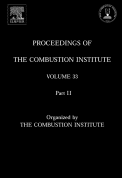
PROCEEDINGS OF THE COMBUSTION INSTITUTE
Scope & Guideline
Igniting Knowledge, Fueling Innovation
Introduction
Aims and Scopes
- Combustion Kinetics and Mechanisms:
Research focusing on the fundamental chemical kinetics of combustion processes, including autoignition, flame propagation, and the mechanisms of fuel reactivity. - Advanced Diagnostic Techniques:
Development and application of advanced diagnostics such as laser-induced fluorescence (LIF), Raman scattering, and high-speed imaging for studying combustion phenomena at various scales. - Numerical Modeling and Simulation:
Utilization of computational fluid dynamics (CFD) and direct numerical simulations (DNS) to model complex combustion systems, including turbulent flames and reactive flows. - Emission Control and Environmental Impact:
Studies aimed at understanding and mitigating emissions from combustion processes, including the formation of pollutants like NOx and soot. - Alternative Fuels and Energy Sources:
Exploration of combustion characteristics and performance of alternative fuels, such as ammonia, biofuels, and hydrogen, in various combustion systems. - Combustion Instabilities:
Research on the phenomena of combustion instabilities, including thermoacoustic oscillations and their impact on flame stability and performance in engines and combustors. - Thermal and Chemical Dynamics:
Investigations into the thermal and chemical interactions within flames, including heat transfer, reaction kinetics, and particle dynamics.
Trending and Emerging
- Machine Learning and AI in Combustion:
Increasing integration of machine learning techniques for modeling combustion processes, enhancing predictive capabilities, and optimizing combustion systems. - Sustainable and Renewable Fuels:
A growing emphasis on the combustion characteristics and emissions of sustainable fuels such as ammonia, biofuels, and hydrogen, aligning with global energy transition goals. - Advanced Diagnostic and Imaging Techniques:
Enhanced focus on employing advanced diagnostic methods for real-time monitoring of combustion processes, including high-speed imaging and multi-species measurements. - Reactive Flow Dynamics and Turbulence:
Research on the interaction between turbulence and reaction dynamics is gaining traction, with studies exploring complex turbulent combustion scenarios. - Detonation and Shock Wave Dynamics:
Increased interest in the dynamics of detonations and shock waves, particularly in high-energy and high-pressure environments, reflecting a shift towards high-performance applications. - Emission Reduction Strategies:
Emerging research on innovative techniques and technologies for reducing emissions from combustion systems, including catalytic processes and fuel modification.
Declining or Waning
- Classical Hydrocarbon Fuels:
Research on traditional hydrocarbon fuels, such as gasoline and diesel, appears to be declining as the focus shifts towards alternative fuels and sustainable energy sources. - Basic Combustion Theory:
Theoretical studies exploring fundamental combustion principles are less prevalent as more applied research and experimental studies take precedence. - Low-Pressure Combustion Studies:
Investigations into combustion phenomena at low pressures are waning, possibly due to the increased relevance of high-pressure combustion scenarios in practical applications. - Single-Fuel Studies:
Research centered on the combustion characteristics of individual fuels, without consideration of blends or alternative fuel combinations, is becoming less common. - Static Flame Studies:
Investigations of static or non-dynamic flame behaviors are being overshadowed by studies focusing on dynamic and real-world combustion scenarios.
Similar Journals
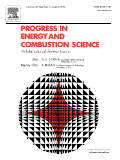
PROGRESS IN ENERGY AND COMBUSTION SCIENCE
Fueling the future with cutting-edge research.PROGRESS IN ENERGY AND COMBUSTION SCIENCE, published by PERGAMON-ELSEVIER SCIENCE LTD, stands as a premier journal in the realms of energy engineering and fuel technology, with an impressive impact factor and recognition across multiple scientific disciplinary matrices. Since its inception in 1975 and continuing through 2024, this esteemed publication has contributed significantly to the advancement of knowledge in energy resources, combustion processes, and their applications in modern technology. With a robust ranking of Q1 in key categories such as Chemical Engineering, Energy Engineering and Power Technology, and Fuel Technology, the journal consistently showcases high-quality research that influences both academia and industry. Researchers, professionals, and students benefit from its rigorous peer-reviewed articles, which foster a deeper understanding of energy-related challenges and innovations. Although it is not an Open Access outlet, its relevance and contribution to the scientific community are undeniable, making it a vital resource for anyone engaged in the pursuit of sustainable energy solutions.

ISI Bilimi ve Teknigi Dergisi-Journal of Thermal Science and Technology
Unveiling Breakthroughs in Thermal MethodologiesISI Bilimi ve Teknigi Dergisi-Journal of Thermal Science and Technology, published by the Turkish Society of Thermal Sciences and Technology, serves as a pivotal platform for disseminating cutting-edge research in the fields of thermal science, engineering, and materials science. With an ISSN of 1300-3615, this journal not only addresses critical advancements from 2008 to 2013 and 2015 to 2023, but also operates under the auspices of rigorous peer review, contributing to its reputable standing in academia. As a Q4 ranked journal in various disciplines including Atomic and Molecular Physics, Engineering, and Materials Science, it offers researchers and professionals essential insights, though it does not currently operate under an open access model. Situated in Ankara, Turkey, this journal is key to fostering collaboration and innovation among scholars, making it an indispensable resource for students and professionals eager to engage with the latest thermal science methodologies and technologies.

COMBUSTION THEORY AND MODELLING
Unraveling the Complexities of Combustion TheoryCombustion Theory and Modelling is a pivotal journal for researchers and professionals in the fields of chemical engineering, energy technology, and combustion science. Published by Taylor & Francis Ltd, this journal, with an ISSN of 1364-7830 and E-ISSN 1741-3559, provides a platform for disseminating significant advances in our understanding of combustion processes and their applications. With a solid impact factor, as reflected in its Q2 ranking across multiple categories including Chemical Engineering, Energy Engineering, and Modeling and Simulation, it serves not only to enhance theoretical knowledge but also to bridge the gap between theory and practical applications. The journal spans a wide timeline from 1997 to 2024, ensuring that it covers both foundational studies and cutting-edge research. Situated in the UK, the journal actively invites submissions that contribute to the evolving landscape of combustion science, making it an essential resource for academics, industry professionals, and students keen on exploring the dynamics of energy and fuel technologies.
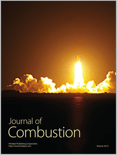
Journal of Combustion
Igniting Innovation in Combustion ScienceJournal of Combustion is a premier academic journal dedicated to the field of combustion science and technology, published by HINDAWI LTD. With an ISSN of 2090-1968 and an E-ISSN of 2090-1976, the journal has been an open-access platform since 2008, ensuring that cutting-edge research is accessible to all. Based in the United States at Adam House, 3rd Flr, 1 Fitzroy Sq, London W1T 5HF, England, the journal publishes articles spanning various relevant disciplines, contributing to knowledge in Chemical Engineering, Fuel Technology, and Energy Engineering. As of 2023, it ranks in the Q3 quartile in Chemical Engineering (miscellaneous) and Fuel Technology, and in Q4 in Condensed Matter Physics and Energy Engineering and Power Technology, highlighting its growing impact and relevance in these fields. Researchers will find valuable insights as the journal converges its findings from 2010 to 2024. With a focus on promoting innovative approaches and exploring new frontiers in combustion research, the Journal of Combustion continues to be an essential resource for academics, professionals, and students committed to advancing the understanding and application of combustion processes.

International Journal of Spray and Combustion Dynamics
Fueling Insights for a Sustainable FutureWelcome to the International Journal of Spray and Combustion Dynamics, a premier publication dedicated to advancing the understanding of spray and combustion phenomena in various applications. Published by SAGE Publications Inc, this journal serves as a vital resource for researchers and professionals in the fields of Automotive Engineering, Energy Engineering, and Physics, boasting a commendable Q2 ranking in its categories for 2023. With an ISSN of 1756-8277 and E-ISSN 1756-8285, it engages a global audience in the investigation of innovative solutions to energy efficiency and combustion processes. Operating from the United Kingdom, this journal is a key player in disseminating high-quality research findings from 2011 to 2024, making it a go-to source for those seeking to enhance their knowledge and contribute to cutting-edge developments in these dynamic areas of study. Researchers, practitioners, and students alike will find this journal invaluable for staying informed and connected to the latest advancements in spray and combustion dynamics.

Applications in Energy and Combustion Science
Advancing Energy Solutions Through Innovative ResearchWelcome to Applications in Energy and Combustion Science, a premier open-access journal published by ELSEVIER that has been at the forefront of research since 2020. With the ISSN 2666-352X, this journal is dedicated to advancing the knowledge and application of energy technologies and combustion systems, reflecting a strong commitment to the evolving demands of the field. Based in the United Kingdom and recognized for its robust contributions, it has achieved noteworthy status in the 2023 rankings: a Q1 classification in both Chemical Engineering (miscellaneous) and Fuel Technology, alongside a Q2 standing in Energy (miscellaneous). Researchers will find it a significant platform, with Scopus rankings placing it among the top tiers in various categories. This journal offers an essential resource for professionals and students aiming to stay abreast of innovative developments and applications in the critical areas of energy and combustion, ensuring broad accessibility and dissemination of research findings.

Propulsion and Power Research
Exploring the Dynamics of Energy Solutions.Propulsion and Power Research, published by KEAI PUBLISHING LTD, is a leading Open Access journal that has been advancing the field of propulsion and power systems since its inception in 2012. With its commitment to fostering scientific discourse and innovation, the journal has gained a prominent position within academia, achieving a Q1 ranking in multiple categories such as Aerospace Engineering, Automotive Engineering, and Fluid Flow and Transfer Processes as of 2023. With an impressive ranking of #18 out of 153 in Aerospace Engineering and consistent recognition in the Scopus rankings, the journal explores critical advancements and research findings that propel the industry forward. As an Open Access publication, it ensures that groundbreaking research is readily available to a broad audience, enhancing collaboration between researchers, practitioners, and students. The journal's scope encompasses a wide range of topics within propulsion and energy solutions, making it an essential resource for anyone keen on discovering significant developments in this dynamic field.

Thermophysics and Aeromechanics
Elevating Knowledge in Thermophysics and AeromechanicsThermophysics and Aeromechanics, published by PLEIADES PUBLISHING INC, is an esteemed journal dedicated to advancing the fields of aerospace engineering, energy engineering, modeling and simulation, as well as nuclear and high energy physics. With an ISSN of 0869-8643 and E-ISSN 1531-8699, this journal serves as a vital platform for researchers and professionals working at the intersection of thermophysics and aeromechanics, delivering cutting-edge research, reviews, and case studies. Despite its current position in Quartile Q4 across multiple categories, including aerospace and energy engineering, it provides a unique opportunity for emerging ideas in these domains to gain visibility and impact. The journal's convergence of diverse scientific disciplines is critical for fostering innovation and technological advancements, making it an essential resource for students, practitioners, and academics alike. In this era of rapid scientific development, Thermophysics and Aeromechanics plays a pivotal role in disseminating knowledge and facilitating interdisciplinary collaboration among a global audience.
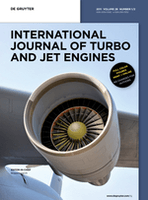
INTERNATIONAL JOURNAL OF TURBO & JET-ENGINES
Unleashing Potential in Turbo & Jet Engine ResearchINTERNATIONAL JOURNAL OF TURBO & JET-ENGINES, published by WALTER DE GRUYTER GMBH, is an esteemed academic journal dedicated to the field of aerospace engineering, specifically focusing on the innovative development and application of turbo and jet engine technologies. Established in 1985, this journal has maintained its commitment to advancing scholarly research and discussion, attracting contributions from leading experts across the globe. With a Scopus rank of #91 out of 153 in the field of Aerospace Engineering, placing it in the 40th percentile and categorized in Q3 for 2023, the journal provides a vital platform for disseminating high-quality research findings and insights into evolving engine technologies. Although it follows a subscription model, its rigorous peer-review process ensures that published articles contribute significantly to the body of knowledge in aerospace engineering and related disciplines. For researchers, professionals, and students alike, the INTERNATIONAL JOURNAL OF TURBO & JET-ENGINES stands as a crucial resource for staying updated on the latest advances and trends in turbojet and turbofan systems.
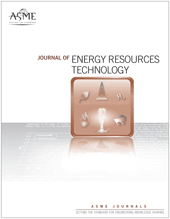
JOURNAL OF ENERGY RESOURCES TECHNOLOGY-TRANSACTIONS OF THE ASME
Driving excellence in energy resources research since 1979.JOURNAL OF ENERGY RESOURCES TECHNOLOGY-TRANSACTIONS OF THE ASME is a prestigious journal dedicated to advancing the knowledge and application of energy resources technology across various disciplines. Published by the American Society of Mechanical Engineers (ASME), this journal plays a critical role in fostering innovative research within energy engineering, fuel technology, geochemistry, and mechanical engineering, evidenced by its solid impact factor and commendable Scopus rankings, including a Q1 ranking in Mechanical Engineering. The journal's comprehensive scope covers a wide array of subjects, from renewable energy solutions to sustainability practices, making it an essential platform for researchers, professionals, and students eager to contribute to and stay abreast of developments in the energy sector. With an impressive convergence history dating back to 1979, it continues to uphold rigorous academic standards and provides valuable insights into the latest technological advancements and methodologies relevant to the field. While the journal does not offer open access options, it is unequivocally a vital resource for those engaged in cutting-edge energy research.